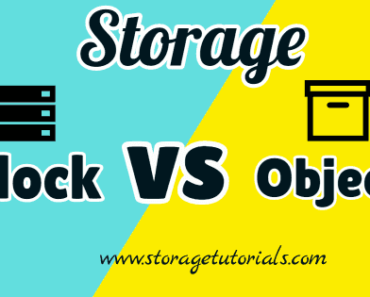Storage Class Memory (SCM) is an emerging storage technology that combines the benefits of memory and storage devices. SCM provides near-DRAM performance while being non-volatile like SSDs.
It has the potential to revolutionize computing by closing the gap between memory and storage.
In this article, we will understand what is Storage Class Memory (SCM), how it works, advantages, examples and its applications.
Table of Contents
What is Storage Class Memory (SCM)?
Storage Class Memory or SCM refers to a new storage tier that sits between main memory (DRAM) and storage (SSDs/HDDs) in the memory/storage hierarchy. It provides persistence-like storage while having access latency close to memory.
Unlike traditional storage mediums such as HDDs (Hard Disk Drives) or SSDs (Solid State Drives), SCM blurs the line between storage and memory, offering unprecedented performance and efficiency.
This allows for faster data access and improved performance in applications that require high-speed data processing. SCM is becoming increasingly popular in data-intensive and real-time applications, offering a promising solution for bridging the gap between memory and storage.
Storage Class Memory (SCM) is an innovative memory technology that combines the speed of RAM with the non-volatility of storage devices. It enables faster data access and enhances performance in data-intensive and real-time applications. With its ability to bridge the gap between memory and storage, SCM is gaining popularity as a promising solution.
Some key characteristics of Storage Class Memory
- Non-volatile: Data persists even when power is removed, like SSDs and HDDs. No need for refresh cycles.
- High performance: SCM has 100x lower latency and 1000x more endurance than NAND flash SSDs. It is nearly as fast as DRAM.
- Addressable: SCM is directly byte-addressable like DRAM instead of block-addressable like SSDs. This enables faster random reads/writes.
- High density: SCM has higher density than DRAM, enabling greater capacity in less physical space.
The Advantages of Storage Class Memory (SCM)
- Speed: SCM’s inherent characteristics enable lightning-fast data access, enhancing overall system performance.
- Durability: With its non-volatile nature, SCM ensures data persistence, mitigating the risk of data loss in case of power failure.
- Efficiency: By minimizing latency and improving data throughput, SCM optimizes resource utilization, leading to more efficient operations.
- Scalability: SCM’s architecture allows for scalability, accommodating growing storage needs without compromising performance.
Examples of Storage Class Memory
To illustrate, consider a scenario where a large dataset needs to be processed rapidly for real-time analytics. With traditional storage solutions, accessing this data might be bottlenecked by latency. However, with SCM, data retrieval occurs at near-instantaneous speeds, empowering businesses to make swift, data-driven decisions.
Another example lies in the realm of gaming. Gamers often encounter long loading times due to data fetching from conventional storage devices. SCM integration in gaming consoles can drastically reduce these loading times, delivering seamless gaming experiences with minimal wait.
Some examples of SCM technologies include:
- 3D XPoint by Intel/Micron – First commercially available SCM using phase change memory. Offers 10x density of DRAM with 1000x endurance of NAND.
- MRAM – Uses magnetic elements to store data. Provides almost unlimited endurance.
- RRAM – Relies on changing resistance to store data. Low power consumption and nanosecond latency.
- PCM – Uses chalcogenide glass that can switch between crystalline and amorphous states. Latency is comparable to DRAM.
Applications of Storage Class Memory
Some potential applications that can benefit from SCM’s unique capabilities:
- Caching – SCM’s low latency makes it suitable for caching frequently accessed data.
- Primary storage – SCM can potentially replace DRAM and SSDs for primary storage needs.
- AI/ML – The high throughput and low latency of SCM can accelerate AI/ML applications.
- Real-time analytics – Enables faster processing for time-sensitive workloads.
Conclusion
In summary, Storage Class Memory delivers the best of both memory and storage. With its non-volatility, high performance, and large capacity, SCM has the potential to transform data center architectures and enable new applications.
As SCM technologies mature commercially, they are poised to fill the gap between memory and storage in the memory hierarchy.




